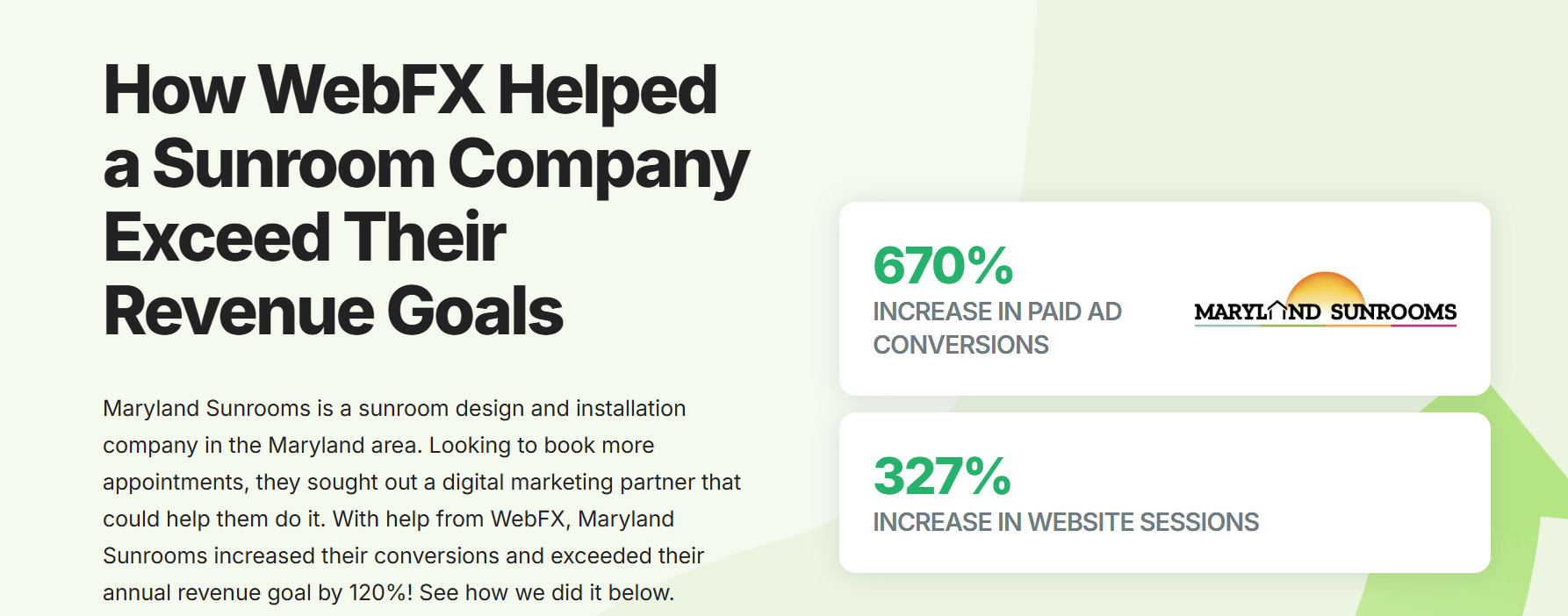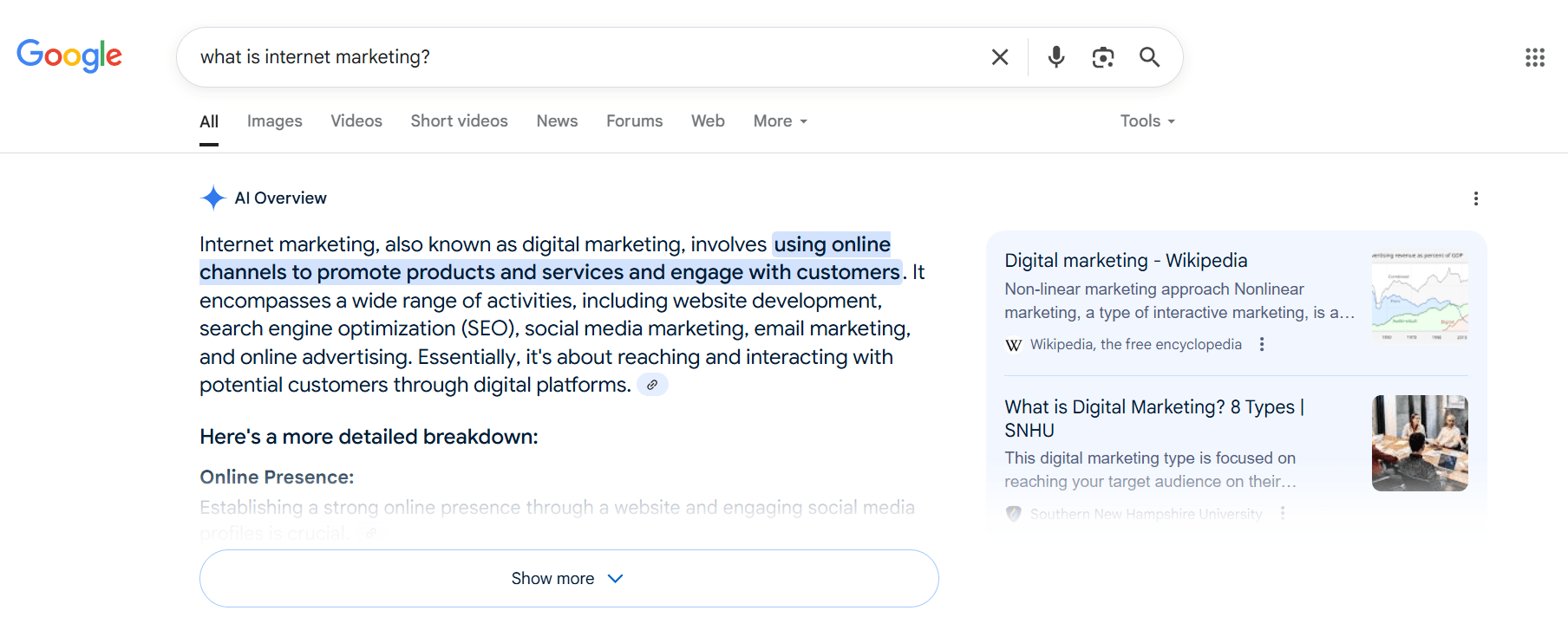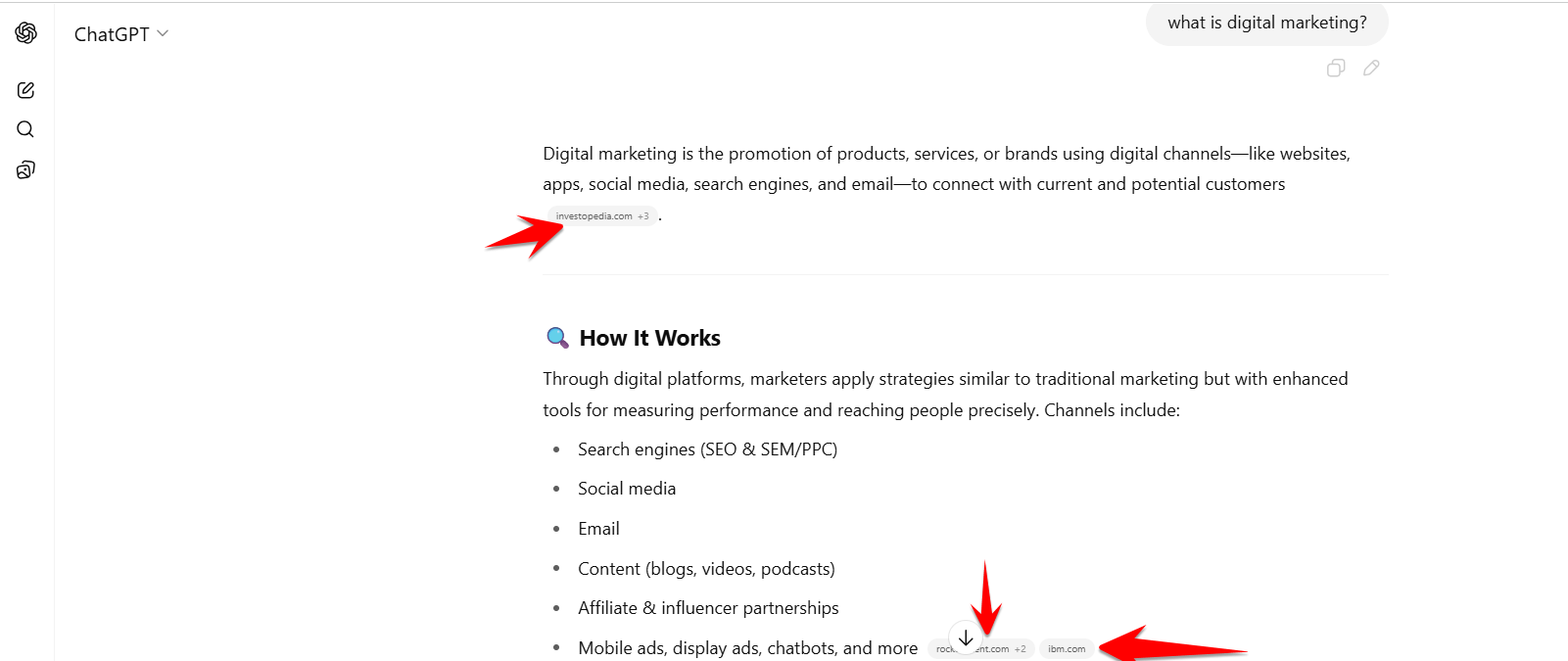Is SEO an Ongoing Process? Yes. Here's Why (and What To Do)
- Is SEO a one-time task or ongoing process? SEO is a continuous process that requires ongoing monitoring, optimization, and adaptation over time — it's a marathon, not a sprint, typically taking three to six months to start driving results and requiring constant updates to maintain effectiveness.
- Why does SEO require constant updates? Search engines like Google frequently update their algorithms (over ten core updates since 2020), user behaviors shift (50% of U.S. consumers now use voice search), competitors continuously improve their strategies, and websites develop technical issues over time that must be addressed.
- What happens if you neglect SEO maintenance? Without ongoing SEO efforts, your website's visibility and traffic will gradually decline over months, leading to lower search rankings, decreased organic traffic, fewer conversions, and reduced sales — though you can recover by restarting consistent SEO strategies.
- What is position zero and why does it matter? Position zero appears before the first organic result on search engine results pages and is now primarily occupied by AI overviews (like Google AI snapshots) — appearing here significantly boosts visibility, traffic, authority, and future-proofs your SEO strategy.
- How often should you refresh website content? Content should be refreshed every 12–18 months to signal to search engines that your site is active and relevant, avoid content decay, ensure faster indexing, and maintain alignment with current keywords and user intent — patience is key as SEO changes take time to show results.
SEO (search engine optimization) is the process of improving your website to ensure it appears higher on search engine results pages (SERPs). Many business owners assume it’s a once-and-done process that you need only when setting up your website.
However, you need it more often than you can imagine. Have you noticed your website traffic gradually dropping? Are your competitors showing up ahead of you in Google searches? Are you heavily relying on paid advertising to appear in search results? All these are signs you need to bring back SEO.
In this guide, we’ll explain why SEO is a continuous process, what happens when you ignore it, and the key maintenance strategies that help you stay visible and ahead of the curve.
Here’s what we’ll cover:
Goodbye search engine optimization, hello search everywhere optimization.Future-Proof Your SEO Strategy with OmniSEO®

Is SEO an ongoing process?
Yes. SEO is not a one-time task — it’s a practice you execute SEO step by step over time. It’s more of a marathon than a sprint, meaning it requires continuous monitoring and optimization in order to drive sustainable organic traffic and long-lasting authority.
It’s not about stacking quick wins but about strategic and persistent effort that ensures your website remains relevant and appealing to users and search engines. Ongoing SEO involves annual audits, regular analyses, constant fixes, updates, and additions to the frontend and backend to keep your site fresh and relevant.
Why is SEO an ongoing process?
SEO takes between three and six months to start driving results. So, it helps to make these continuous changes and adaptations to compound the results over time and maximize your SEO return on investment (ROI).
There are various other factors that necessitate constant SEO updates:
- Constant search algorithm updates: Search engines constantly update their algorithms. For example, Google has made more than ten core updates since 2020 to improve search results and user experiences. So, you must adapt your SEO strategies to respond to the updates.
- Keep up with competitors: Your competitors are always updating and expanding their campaigns and strategies, so you will need to stay ahead of them as well. Without adapting your SEO, your website risks falling behind in rankings and missing out on traffic and valuable leads.
- User behavior shifts: Internet user behaviors change over time, necessitating adjustments to website structure and content. For example, in 2025, up to 50% of U.S. consumers are using voice search, which wasn’t the norm before, so your web pages must be optimized accordingly to appear in these searches.
- Technical fixes are inevitable: Websites develop issues over time, like slow page speeds, mobile-friendliness errors, or broken links. These affect the user experience and hurt your rankings, which you can prevent with regular technical SEO audits and fixes.
- Content becomes outdated: With time, the content on your website may become irrelevant and outdated. You can fix that by publishing new content, building topical authority, removing low-performing content, and updating outdated pages to maintain value and relevance.
- Analytics reveal opportunities: Tracking and measuring SEO results reveal what’s working and what’s not working on your site. It uncovers what you can do to maximize ROI, such as uncovering keyword opportunities and underperforming pages.
What are the benefits of ongoing SEO?
The main benefits of ongoing SEO are continuous growth and long-term success in visibility. Consistent SEO will also increase your brand’s authority and make you a trusted source of information in your industry.
SEO gradually builds organic traffic, which creates sustainable growth and is cost-effective in the long run. Once you achieve good rankings, the cost to maintain is also low.
Regular SEO activities also include analytics, user behavior, and keyword trends. You can also use this data to give you insights to inform broader business and marketing decisions. You can refine as you go to help you refine your overall strategy for better results.

We have numerous SEO success stories that should inspire you to get the ball rolling on your SEO campaigns. Maryland Sunrooms is one of our clients who enjoy a 327% increase in website sessions and a significant boost in appointment bookings thanks to a custom and ongoing SEO strategy.
What happens if you don’t do SEO maintenance
While your website can maintain popularity and decent traffic results for a while after the first SEO overhaul, it will slowly start to decline. You will notice over the months that your visibility and overall presence will drop.
As your website traffic drops, so will its rankings on search engines. Organic traffic will decrease, resulting in fewer people finding your website. Fewer visitors will mean fewer conversions and sales.
The good news is that even if your SEO has been on hold for a time due to unforeseen circumstances, you can get it back on track again. Once you start your SEO strategy again, you will slowly start seeing improvements.
It will take you time to get back to where you used to be, but it is still possible with consistency, a professional SEO strategy, and quality content.
7 SEO maintenance tips to keep your site relevant
With the understanding that SEO is an ongoing process, it’s important to understand how to stay abreast of what’s happening and do your best to keep from falling behind as a business or individual. When you least expect it, SEO rules may change a little… or a lot… and you have to be prepared.
Let’s take a look at the 7 best practices for ongoing SEO:
1. Update content for the position zero on results pages
Position zero is the most enviable position on search engine results pages (SERPs). It comes before the first organic result, and sometimes before the sponsored results.
Before 2025, this position was reserved for featured snippets, but since mid-2024, Google AI overviews have become the mainstream position zero result. AI overviews on Google, Bing, and other search engines are snapshots that leverage generative AI to provide users with quick and simplified answers to their queries.

Appearing in the position zero boosts your business’s visibility, traffic, and authority in your industry. It keeps you ahead of the competition and future-proofs your SEO by aligning you with the search engine’s future direction.
Here are a few tips for optimizing your web pages for the position zero on SERPs:
- Structure your content in a way that users can find answers as quickly as possible
- Include E-E-A-T (experience, expertise, authority, and trust) signals
- Use conversational language and target long-tail keywords
- Optimize for search engine ranking factors to improve visibility
- Update content regularly to keep content fresh and relevant
2. Perform regular SEO audits
An SEO audit is the process of evaluating your website to identify factors that impact your ability to rank in search engine results pages (SERPs). By evaluating your on-page, off-page, and technical SEO, you can adjust and alter your content and website as needed to boost visibility, rankings, and performance.
SEO audits are layered, and here’s how you can break them down:
- Analyze the keywords you’re using or want to target moving forward
- Check your page speed to ensure users don’t have to wait for slow-loading pages
- Determine that your site is mobile-friendly and responsive
- Confirm that your site is securely encrypted with HTTPS
- Crawl the site to identify errors and disallowed pages
- Check for duplicate content and keyword cannibalization
3. Refresh your content every 12–18 months
Search engines, like Google, like to see new, fresh content posted on a regular basis. It signals that you value and prioritize what your users want and understand that their user intent changes over time. The Google algorithm also considers freshness as a sign that your website is active and relevant.
New content tells search engines to crawl your site more often and enables faster indexing, ensuring your website ranks sooner. Refreshing website content also helps you avoid content decay, which is the decline in organic traffic over time.
An impactful content refresh involves:
- Have a schedule to refresh your content, so you can keep up with the updates
- Update content to reflect relevant keywords and market personas
- Optimize your website for mobile-friendliness and modify your old page URL
- Change the date on your copy or remove the date completely for an evergreen copy
In addition to content refreshes, you need to implement content pruning, which involves removing thin, irrelevant, outdated, and low-performing content from your site to boost SEO performance
4. Be patient with SEO maintenance
If you’ve recently started with SEO in-house or with a top SEO service provider, you may find yourself checking your analytics on a daily (or hourly basis). And while monitoring your results is certainly useful, it’s important to remember that SEO takes time.
Patience is key, and being impatient can backfire. For example, let’s say you write a page that’s optimized for “best hotdogs in St Louis, MO”. After four weeks, the page isn’t ranking when you type that keyword phrase into your search engine, so you get annoyed and go back. You change the content to be optimized for “best type of organic hotdogs St Louis Missouri” (which, by the way, just sounds awkward).
Four more weeks go by… without anything. The problem might not have been the keywords, but the fact that you never gave the page a chance to get crawled! There are billions and billions of pages online, and you can’t expect your site to be indexed as soon as you change it.
If you start tweaking your content before they have a chance to do their “magic”, you’re destined to be left behind. On the other hand, if you aren’t seeing any movement after six months of optimization, it’s probably time to reevaluate.
5. Stay up to date on SEO trends
SEO changes constantly, so it’s important to stay up to date on what’s happening in the world of search engines. Professionals who practically eat, sleep, and breathe SEO all say the same thing: You cannot afford to assume that the status quo will remain forever.
Most constantly study SEO trends and topics, if not daily, then at least weekly. This keeps them from missing out on trends, algorithm changes, and other important events, like a recession, which can improve or damage their clients’ rankings.
In 2025, there are some top SEO trends to help shape your strategies:
- Optimizing for AI overviews, which now appear on 30% of all searches
- Building presence on forums, like Reddit and Quora
- Diversifying content strategies to include video marketing and YouTube SEO
- Implementing an OmniSEO® approach that unlocks visibility everywhere
- Ensuring search personalization by leveraging your first-party data
- Optimizing for social search with personalized content and cross-channel content promotion
- Scour websites and see what they’re doing right to earn from their high points and their mistakes
6. Optimize for AI technologies and behaviors
AEO (answer engine optimization) is the process of improving your site’s visibility in AI results. It’s pretty much new age SEO. Instead of focusing on helping you rank on traditional search engines, like Google, Bing, and Yahoo, AEO enables you to rank on AI search engines, like ChatGPT, Copilot, and Perplexity AI.
Optimizing for AEO boosts your SEO by improving your visibility on search engines, pushing you up to the position zero above all other organic results. AEO emphasizes providing direct answers to user queries to future-proof your SEO by ensuring your content provides the most direct, helpful, and relevant results.
When done right, AEO allows you to appear in voice search results, knowledge panels, people also ask boxes, and voice search results. OmniSEO® is the technique that enables you to rank everywhere on traditional and AI search engines.

7. Maintain technical SEO
Maintaining technical SEO elements keeps your website user-friendly, crawlable, and indexable. Regular technical SEO maintenance ensures you maintain optimal performance. It involves regular checks, fixes, and updates to keep
It involves enhancing the backend website elements that affect user experience and keeps you aligned with search engine updates. Technical SEO maintenance involves the following key steps to ensure smooth website functionality:
- Fixing broken links on your website
- Ensuring your website is mobile-friendly
- Securing your website with HTTPS
- Improving page load speeds
- Removing redirect chains
- Ensuring accurate robots.txt file formatting
FAQs about ongoing SEO
Is SEO an ongoing process?
Yes. SEO requires continuous monitoring, updates, and optimization to maintain and improve search rankings. Algorithm changes, competitor activity, user behavior shifts, and content decay all require ongoing attention.
What happens if I stop doing SEO?
Your rankings will gradually decline as competitors continue optimizing and search algorithms change. Traffic will decrease, and recovering lost rankings takes longer than maintaining them.
What is the most important ongoing SEO task?
There’s no single most important task. Effective ongoing SEO combines regular content updates, technical maintenance, performance monitoring, and adaptation to algorithm changes and trends. Consistency across all areas drives the best results.
Should I hire an SEO agency or do it myself?
It depends on your resources and expertise. SEO requires significant time and specialized knowledge. Many businesses find that partnering with an experienced SEO agency delivers better results faster than managing SEO in-house.
What is OmniSEO®?
OmniSEO® is WebFX’s approach that combines traditional SEO with answer engine optimization (AEO) and generative engine optimization (GEO) to help brands rank across both traditional search engines and AI-powered platforms like ChatGPT, Google AI Overviews, and Perplexity.
How much does ongoing SEO cost?
SEO costs vary based on scope, competition, and goals. On average, businesses spend around $2,500/month on SEO services. Factors like your industry, business size, and the types of SEO you need will influence your investment. The SEO ROI typically outweighs the cost, as organic traffic doesn’t require ongoing ad spend.
Clutch has personally interviewed more than 250 WebFX clients to discuss their experience partnering with us.Independent research from Clutch has named WebFX the top SEO company in the United States.

Keep your SEO moving forward with WebFX
SEO is a never-ending process. Search engines change, competitors evolve, and user behavior shifts constantly. If your SEO stands still, your rankings won’t.
That’s why the most successful brands treat SEO as a continuous strategy, one that adapts, improves, and grows with their business.
If you want to implement ongoing SEO but don’t have the time or resources to keep up, WebFX can help. With over 29 years of digital expertise, our team of 220+ SEO experts has the skills, experience, and tools your business needs to rank well and, more importantly, deliver stronger ROI.
Let’s get your SEO back on track. Contact us online or call 888-601-5359 to speak with a strategist today about our award-winning SEO services.
Marketing Tips for Niche Industries
- How to Optimize SEO for Dog Trainers
- How Tutors Can Use SEO to Successfully Get Clients
- HVAC SEO Services
- Industrial SEO: from Basics to Business Growth Strategies
- Law Firm SEO: Sign More Clients with Law Firm SEO Services
- Local SEO for Healthcare [+5 Tips to Getting Started]
- Long Tail Keywords for Real Estate
- Long Tail SEO Keywords for Medical Practices
- Real Estate SEO Services | SEO Services for Real Estate
- SEO for Alternative Medicine: Capture Sales with SEO Services











